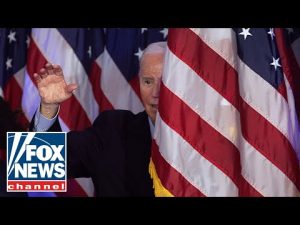In an extraordinary display of assertiveness, former President Donald Trump called out the issue of violence against white farmers in South Africa during a recent meeting with that nation’s president, Cyril Ramaphosa. This meeting took place in the Oval Office and took the news cycle by storm, especially given the stark contrast between Trump’s direct approach and how many in the mainstream media have treated the topic. While many news networks have chosen to overlook the plight of these farmers, Trump decided to bring this controversial issue to the forefront.
At the heart of the matter is an alarming pattern of violence against farmers in South Africa, predominantly targeting white individuals. Trump showcased grim visuals during the meeting, including harrowing videos and images of white crosses symbolizing each farmer’s death—a poignant reminder of the lives lost. This unprecedented move by a U.S. president challenged the prevailing narratives pushed by the media back home, which have often dismissed claims of racially motivated violence in South Africa as exaggerated or unfounded.
Critics in the media were quick to attack Trump’s assertions, labelling them as misinformed and alleging that he had fallen prey to conspiracy theories. Despite these claims, the reality on the ground remains troubling, as reports continue to document the ongoing violence faced by these farmers. Trump’s willingness to highlight these deaths—and even name the victims—placed him squarely at odds with the narratives perpetuated by certain media outlets. These same outlets have been more inclined to trust organizations like Hamas over genuine reporting from South Africa. This comparison underscores a disturbing trend: when certain narratives don’t fit the mainstream agenda, they are often silenced or ignored.
The reaction to this Oval Office meeting was as predictable as the sunrise; networks like CNN were quick to downplay Trump’s commentary, presenting him as a purveyor of misinformation. Critics argue that this neglect of serious issues is a glaring double standard. Had the roles been reversed, with white farmers targeting black individuals, it’s unlikely the media would remain silent. Instead, they would surely rev up their coverage to ensure every viewer was aware of what transpired. But because the victims are predominantly white, many in the media seem to deem it unworthy of attention.
While President Ramaphosa was in Washington to discuss business opportunities and attract American investment, Trump’s message was clear: significant change needs to happen in South Africa, or no investment will come. His bold stance during the meeting served as a wake-up call for the South African leader, who has faced criticism for allowing such brutality to continue under his nose. Trump’s unequivocal demand highlighted an uncomfortable truth—business deals depend on establishing accountability and safety for all individuals in South Africa, regardless of their ethnicity.
In sum, the encounter between Trump and Ramaphosa raises awareness about a crucial issue that has gone largely unreported in mainstream media circles. The former president’s legislative approach, juxtaposed with the media’s dismissal of serious allegations, reflects a persistent contradiction within the societal discourse around race and violence. As Americans continue to sift through the fog of misinformation and reporting bias, it becomes evident that the conversation around South Africa’s farmers deserves more attention, regardless of political affiliations and the narratives pushed by media elites. In this landscape, accountability for horrific acts of violence should not depend on the race of the victims.







